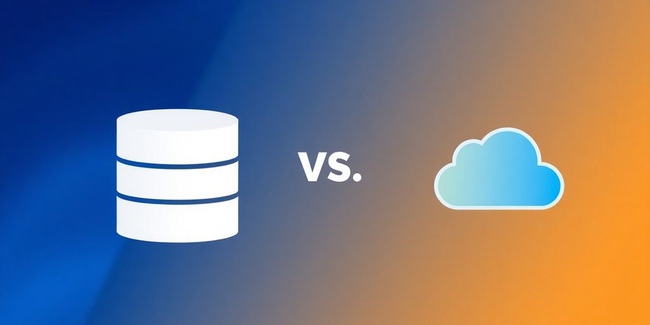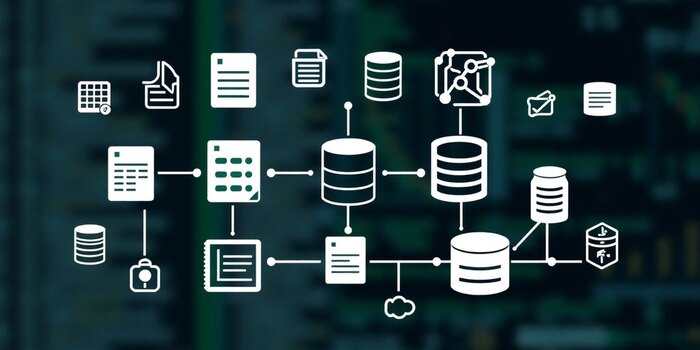Introduction to Database Management Systems
Database Management Systems (DBMS) are the backbone of modern applications. They handle the storage, retrieval, and management of data. Think of them as the digital filing cabinets for everything from your social media posts to banking transactions.
Choosing the right DBMS is crucial. It impacts performance, scalability, and even development costs. Understanding the different types is the first step.
This article will explore relational and non-relational databases. We’ll look at their strengths, weaknesses, and ideal use cases. This will help you make an informed decision for your next project.
What is a Relational Database?
Relational databases are a cornerstone of data management. They organize data into tables. These tables have rows (records) and columns (attributes). Think of it like a spreadsheet, but way more powerful.
Relational databases use primary and foreign keys. These keys link tables. This linking creates relationships. It allows for efficient data retrieval across multiple tables.
They’re used everywhere. From small systems to big enterprise apps. They handle different data types. Plus, they can change to fit new needs.
Key Features of Relational Databases
Relational databases organize data into tables with rows and columns. Each table represents an entity. Columns define attributes. Rows hold individual records.
Relational Database Management software is key. It lets you manage and query data. SQL (Structured Query Language) is the standard language. It’s used for interacting with these databases.
Relational databases support ACID properties. Atomicity, Consistency, Isolation, Durability. These properties ensure reliable transactions. This is crucial for maintaining data integrity.
What is a Non-Relational Database?
Non-relational databases, also known as NoSQL databases, offer a departure from the traditional row and column structure. They are designed to handle diverse data types. Flexibility is a key advantage.
These databases use various data models. This includes document, key-value, and graph structures. They are optimized for applications needing high scalability and speed.
Non-relational databases are particularly useful when dealing with unstructured or semi-structured data. Think social media posts, sensor data, or machine logs. They don’t force data into a rigid schema.
Key Features of Non-Relational Databases
Non-relational databases shine with their flexible schemas. Unlike relational databases, you don’t need to predefine everything. This allows for easier adaptation to changing data requirements.
Scalability is another major advantage. NoSQL databases are built to handle large volumes of data and high traffic loads. They often use distributed architectures.
Non-relational databases support various data models. This includes document stores, key-value stores, column-family stores, and graph databases. Each model is suited for different use cases.
Comparing Relational and Non-Relational Databases

Data Structure and Schema
Relational databases use a structured schema. Data lives in tables with rows and columns. SQL is the language to query them.
Non-relational databases are more flexible. They can handle different data types like documents or key-value pairs. This means no fixed schema.
Choosing the right data structure is key. It depends on your data’s nature.
Scalability and Performance
Relational databases often scale vertically. This means upgrading to a bigger server. It can get expensive.
Non-relational databases are designed to scale horizontally. This means adding more machines to the cluster. It’s often more cost-effective.
Scalability is a big factor. Consider how much data you’ll have and how fast you need to access it.
Use Cases for Relational Databases
Relational databases are great for financial transactions. They ensure data consistency and accuracy. Think banking or accounting systems.
They also work well for managing customer data. Any application needing structured data benefits. Relational database are a solid choice.
If you need strong data integrity, relational databases are the way to go.
Use Cases for Non-Relational Databases
Non-relational databases shine with big data. They handle large volumes of unstructured data easily. Think social media feeds or sensor data.
They’re also good for real-time analytics. They can process data quickly and efficiently. This is useful for things like fraud detection.
Non-relational databases are often used for content management systems. They offer the flexibility needed for diverse content types.
Factors to Consider When Choosing a Database
Choosing the right database is a big deal. It impacts performance, scalability, and even development speed. Let’s look at some things to think about.
Consider the type of data you’re working with. Is it structured, like customer info, or unstructured, like social media posts? The database choice should align with your data’s nature.
Think about your team’s skills. Are they SQL experts, or do they prefer NoSQL approaches? A familiar database technology can save time and reduce errors.
Conclusion: Making the Right Choice for Your Needs
Choosing between relational and non-relational databases isn’t a one-size-fits-all deal. It really depends on what you’re trying to do. Think about your data, your team’s skills, and what you need the database to actually do.
Consider the long-term implications. Will your data grow rapidly? Do you need complex relationships between data points? Answering these questions will guide you to the right database solution.
Ultimately, the best choice aligns with your project’s specific requirements. There’s no universally superior option; it’s all about finding the right fit.
Final Thoughts on Choosing the Right Database
In the end, picking between relational and non-relational databases really comes down to what you need for your project. If your data is structured and you need strong consistency, a relational database is probably the way to go. They’re great for complex queries and keeping everything organized. But if you’re dealing with a lot of unstructured data or need something that can grow quickly, non-relational databases might be a better fit. They offer flexibility and can handle large amounts of data without a strict structure. So, think about your data, how you plan to use it, and what your future needs might be. That’ll help you make the best choice.


